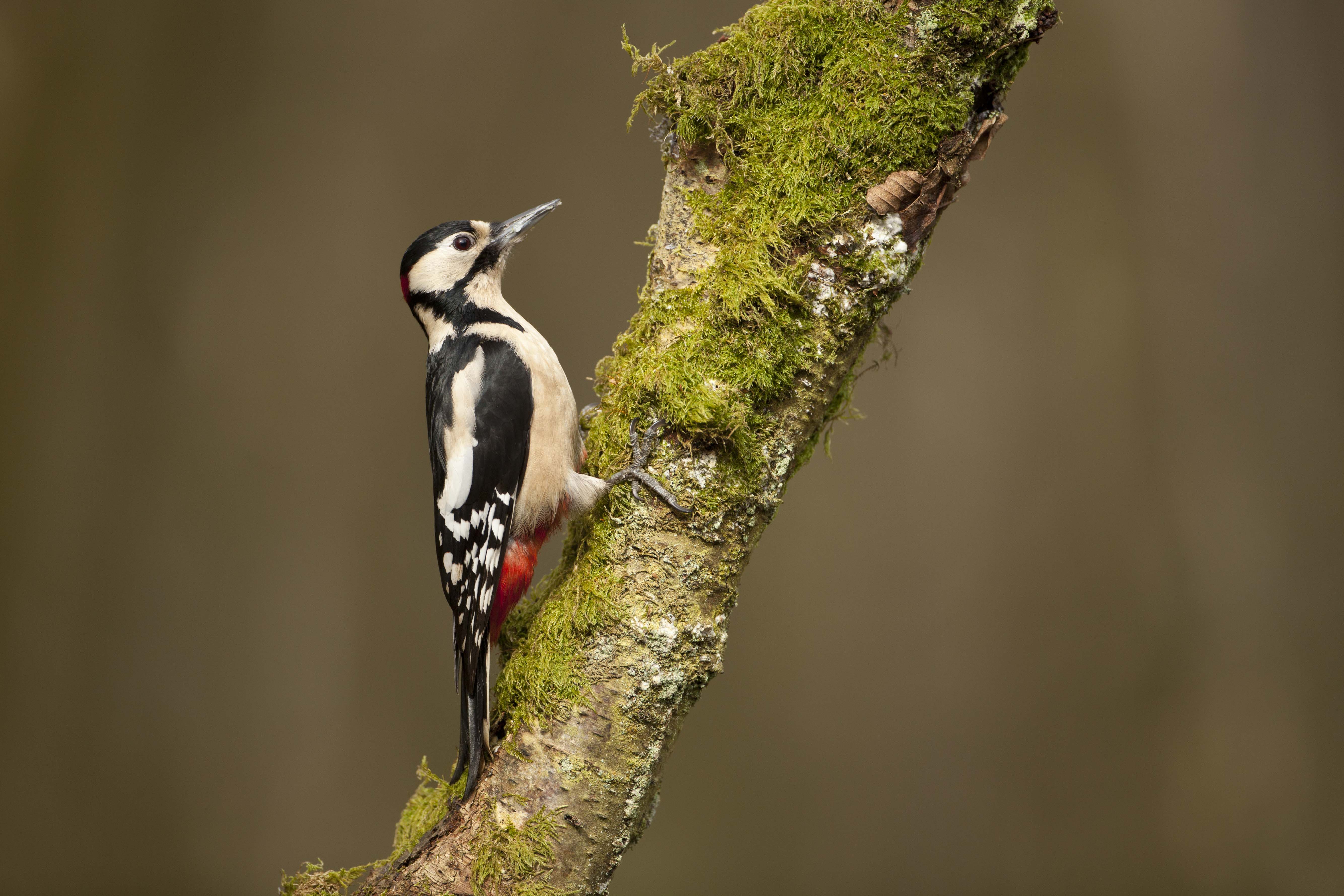Wander through a woodland in spring and you’re likely to hear bursts of rapid, resonant tapping echoing through the trees. This staccato sound is the work of a woodpecker on a mission. Each rattle sends a message to all the other woodpeckers that can hear it – this part of the forest belongs to me. So how do woodpeckers drum, and how can you identify them at other times of the year?
Headbangers
Whilst some birds sing to attract a mate and intimidate their neighbours, woodpeckers take a different approach. They hammer their beak against a tree trunk at incredibly high speeds – up to 40 strikes per second for the great spotted woodpecker. There’s no denying that’s impressive!
There’s been some debate about how woodpeckers can cope with the strain of repeatedly banging their head against a hard surface. For a long time, it was thought that woodpeckers had spongy skulls that absorb some of the impact and protect the brain – people have even copied this idea to create safety helmets. But a study published last year disputed this common belief, showing that there is no cushioning effect. The woodpeckers use their head as a stiff hammer, not a shock absorber. Instead, it's their small size that protects their brain, as smaller animals can withstand higher deceleration. Woodpeckers just shrug off blows that would give us a serious concussion.








